How do I make a concrete leaf casting?
{{gwi:2110216}}Image by: Dena
This is one of our most popular questions. The paragraphs are responses by Garden Web members. The names and Web sites were removed but the basic information remains intact. Thanks to everyone who contributed!
====================================
I remember seeing on a show, Martha or someone else, on location, a way to use large leaves as molds for garden sculpture. If anyone is familiar with the show will you please share the instructions with me. Thanks
====================================
Member Responses:
The Martha show was July 7, 1999. She did two shows with guests, David Little and George Lewis, from Bainbridge Island Washington. I have since visited the garden and also experimented with making several different types of leaves. The easiest leaves to learn on are hosta leaves. I have also made large Rhubarb, Rodergsia, and Gunnera. This fall I plan to tackle at least one Gunnera Leaf that is over 3Ft in width/diameter. (If you do not know what a Gunnera is look it up an
d check out a site with pics. some of their leaves reach well over five feet in width.
Concrete Recipe
fine sand (#1 play sand works well)
cement (portland ( unfortunately it comes in very large bags))
bonding agent (sold at hardware stores along side the cement products, also called fortifier)
plastic wrap
water (a large cup works well)
cement/concrete colorant (optional)
Hosta leaves or other deep veined leaves (start with a little larger than hand size, dream about the next one you'll make that is bigger)
mixing container (a flat dishpan/ or wide bucket works well)
1 1-2" cheap paintbrush
16 gauge wire
latex or acrylic paints (vibrant colors look good in the garden)
a couple old towels/rags
Directions:
On a flat surface place a mound of damp sand, take your leaf and press the top side of the leaf over the sand, gently remove the leaf, and cover the mound with saran wrap, then re place the leaf on top of the saran wrap. The wrap must extend out from the edges of the leaf, as this keeps the concrete from coming into contact with the sand. Now take 3 parts of fine sand, 1 part of portland cement, if using dry cement colorant add it here, (if using liquid color add to the first bit of water you put in). Add the fortifier to the first amount of water that you add. Remember to add water a small amount at a time. Continue to add water until the mix is the consistency of toothpaste. Take a little of the mix and place it on the top of the leaf, then begin working the blob of mix toward the edge of the leaf, but not quite to the edge. Put it over all the leave. Thickness 1/4-3/8". If you want the leaf to hang on a fence or railing of some sort, place a small piece of 16 gauge wire (I use coat hanger) that is cut about two inches, then twisted so it makes a circle with tails. place this in the back of the leave a little distance a way from where the stem would be, wiggle it into the damp concrete and place a little more on the top of the twist so just the circle shows. With the paintbrush dip it into water and shake it so it?s not real wet, now brush from the edge of the leaf to the center gently. This part is optional but finishes the back of the leaf nicely. Cover the leaf with a little plastic loosely or a damp cloth if a warm day. Dependent on the size of the leaf you have made it only takes a day to dry. First timers PATIENCE IS CRUCIAL! To un-mold, gently lift up the concrete leaf and all. Turn it over in your hand and gently peel back the hosta. Concrete Leaf Sculpture can be painted with either latex house paint diluted 1.1 with water. Brush on one color and quickly wipe it off with the old cloth, add another color if you'd like. On the back of the leaf use a full strength solution of the paint. The leaves fully cure in about thirty days. You can seal with a sealer that is for concrete, check with your local hardware store. GOOD LUCK. I have held a couple of classes, successfully. One of the other crucial things is the weather, TOO HOT and the concrete will crack, a cool day is best. LET ME KNOW HOW YOU DO, or what your questions are!
-
I want to make sure that those of you who try this project are successful. I recommend any leaf over two hand widths have some sort of reinforcement such as chicken wire or I use a fiber glass wall tape for those two hand widths to five hand widths, any thing larger would require some sort of metal armature(sp). To apply the reinforcement, put a thin layer on the leaf then criss-cross the "tape" and gently press it in to the concrete, then apply an over layer. If any one has questions please ask. Since I have been following this line for a while I notice many ask about hypertufa......You can use hypertufa too.....obviously not as strong, but still just as fun. It is fine with me if you e-mail me directly. Dena
-
A couple more notes; 2 hand widths for me are about 14" (both hands spread thumb to little finger). The edges can be made stronger by adding a bit of the fortifier/bonding agent to the water that you are brushing over the back. For larger leaves the concrete will be thicker, this answer is a little trickier. You can make the back of the leaf as thick as you want, provided you let it cure, but I have found (because some of mine have split or cracked when I wasn't patient enough to wait for the concrete to set fully) that anywhere from 3/8"-1 1/4" is all the heaviest portion, weight bearing area of the leaf needs to be.
-
In regards to what to do with the leaves after you are done with them, and they have been painted or not. I place mine strategically in the garden as an ornament. A few of the "bowled" leaves have become water catchers and birds use them or other small animals. I have placed them on tree stumps for added height. Functional and/or just for fun. Thanks for the site with the furniture. I have been thinking about how to and believe I have it figured out.
-
I've made some of these leaf castings and would like to suggest that people start with small leaves first. Recently I've used Dutchman's Pipe, Ligularia, Plume Poppy and Red Cabbage! These small leaves are easy to use. I've put them in window boxes and other containers and used them as table decorations. My other piece of advice is to be patient before lifting them from their sand piles. It's hard but wait at least 2 days before you gently turn them over and then wait another couple of days before you handle them. You can add concrete reinforcing fibers to the mix when you're making larger leaves. Just be sure to sprinkle them onto the dry mix and mix well as they will clump. The only downside is that they will stick out a bit. After the leaf is dry you can burn the tiny ends off with a propane torch. Also, I don't do the saran wrap thing. I use thin dry cleaner bags over the whole pile of sand and put my leaf over that. Does all of this make sense? I guarantee you all will be amazed at the possibilities that concrete/cement presents after you've tried these leaves. When you get to larger leaves try burdock, comfrey, cabbage and castor bean.
-
I also use the dry cleaner bags, and have found I can shape the leaf over the wet sand that has been covered with wrap/bag. I tried to stress the PATIENCE thing, as it can be almost devastating to work so hard and have it break! For reinforcement of very large leaves it is still recommended to use chicken wire or stronger. I use fiberglass wall tape, for medium size leaves, the type used for patching wall board (there are several kinds so you have to read the label), anyway the tape doesn't show because you cover it with cement, and then wouldn't have to burn it off. By the way what do you use to burn it off, sometimes that Rhubarb can be a bit difficult to get off the cast.
-
I've made a number of these casts using hosta, rhubarb, grape, calla lily, rodgersia, ligularia, and most dramatic of all (to date), elephant ear caladium leaves.
I use a mix of 2 parts sand to 1 part Portland cement, with an acrylic fortifier added.
If you check with a concrete manufacturer/supplier (a home warehouse store will not have these items), you will be able to get white Portland Cement and white sand of varying grain sizes. I use white cement and 70 grit white sand to make beautiful, very dense casts. Using white materials also enables you to add minute amounts of colorants for pastel leaves. White Portland cement is about 3 - 4 times the cost of the regular grey; white sand is about twice as expensive.
The problem of brittle, crumbling edges can be overcome by bringing the plastic wrap up over the edges of the concrete and kneading and working it much like you would "neaten" the edges of a pie crust you are rolling.
If, after removing the leaf from the cast, you find you have very rough edges from not having neatened them sufficiently, you can gently "wet sand" the edges with the back of a ceramic tile or a similarly abrasive substance.
I use pottery tools to coax stubborn bits of leaves out of the veins on the casts, followed by a bit of bleach in water to remove the discoloration caused by oxidation of the leaves on the white concrete.
A word of caution: Sugar is commonly used by concrete contractors to retard the chemical process responsible for concrete setting up. If you have ever seen exposed aggregate, this is often accomplished by pouring Coca-Cola (I'm a Pepsi drinker, myself) over the surface of the newly poured concrete after the aggregate (gravel) has been tamped into it. This is later hosed off, taking with it the un set-up concrete and sand, leaving the top of the aggregate exposed. Sugar is present in various plant leaves to varying degrees. To date, I have been unsuccessful in making casts using water lily leaves, as the concrete fails to set up uniformly on the surface of them. Plus, with those leaves having the stem attached at a location other than the edge of the leaf (as with the waterlily), you will need to decide what to do with the stem when you make a cast - do you leave it in place (meaning you will have a hole in your cast) or do you cut it off and mold the concrete over the cut-off stem? If you cut it off, it will "leak" sugar into your concrete mixture, causing a pit in your completed cast. To date, I have tried patching the cut stem with tape as well as melted candle wax; however, neither method has been entirely satisfactory.
-
I use whatever colorants I can find! The home warehouse stores have a limited range of colorants - black, brown, red and buff. When mixed with white cement and sand, the buff looks very much like the lighter, more expensive terracotta. However, the red is too "plastic terracotta" looking for my taste.
Check the craft stores for colorants (both liquid and powder) used for ceramic mosaic and stepping stone projects (can't remember the brand name - Mosaic something-or-other). Also, some stained glass stores stock a wide range of powdered colorants (Diamond-Crete and others) for use in mosaic stained glass projects.
Truthfully, however, other than the white and buff, both of which I really like, I find I much prefer a subtle color wash of paint over that of the solid color the dyes afford, as I find the solid color too un-dimensional, flat, uninteresting and rather "dead".
Have you seen the concrete acid dyes? Like paint, these are also applied to the surface of the concrete, as opposed to being incorporated into the mix, and look very "alive", with subtle variations in color. There was a thread awhile ago where someone provided the site of a company that sells these gorgeous dyes. While they were expensive, they did have a sampler package of 4 or 5 nice colors that went for around $40, I believe. However, despite having looked for the past 20 minutes, I *cannot* find it again! Sorry!
Hope this helps. If not, feel free to post here again or e-mail me directly. Good luck!
-
I have a couple of questions and/or suggestions after reading this interesting post. For several years, I have been making stepping stones, and personalizing them for friends, using plants and leaves which I grow in my gardens and pressing them into the top of the stone, and "engraving" their name in the center of the stone. I make my own mold "rings", and work from the bottom up, placing the plants on the top, and pressing them into the concrete.
I'm wondering why you start with the leaf on the bottom. Do you get better detail that way?
Also, I'm wondering WHY you use fortifier. I have never seen or heard it being used before - and wonder what benefit I am missing.
When making the stones, I leave them set for a good day before moving them, but also mist them with a mist bottle every hour or so, once they are set well. This makes for a much better cure. This "tip" came to me from a company that makes garden sculptures. They say if you can possibly immerse the "set" pieces in water for a month after casting or making them, they will be much stronger. SO, that brings me back to the question of the fortifier...Is it possible the spraying and soaking in water does they same thing as the fortifier (I'm assuming the fortifier is for strength.)
I also use chicken wire in the middle of my stepping stones - just to be safe. I can see the above ideas very easily being adapted to making stepping stones, rather than just stopping at the outline shape of the object being "cast".
Just a few "thoughts" and a couple questions. Thanks!
I'm going to try some of the above ideas using what remaining rhubarb leaves I have left, and may even grab a hosta leaf or two right before a killing frost....thought they would be wilting before now, but not all of them have...fortunately for me! :-)
-
Billie, You are reading my directions correctly. When you "turn" the leaf out/over (after the dry time) you will then have a leaf with the top side that is now the veiny side up. It you decide to paint them you will be surprised to see they look very much like the actual leaf "right side up". I will attempt to post a few pictures of some of the leaves I have done. Dena
-
I have attempted to post a picture, but I don't really get how to......Someone out there write how to and I will then post them.
-
The majority of the leaves begin with a concrete colorant added at the time I am mixing and making the leaves. Then some are painted, mine are with acrylic paints that have been diluted slightly. I am interested in trying the concrete stains that are available, however they are only sold in pretty large size batches (for a patio/deck or sidewald area). I have yet to contact someone who does concrete pouring and ask if I can get a couple ounces of the stain to try. Also, a great big thanks for posting the picture. I still do NOT get how to do it. I have other pictures that are better and would really rather they were on the post. Thanks Dena
-
A few more specifics, how big is big enough? I have found that some leaves do not transport well, although I am sure there are a few florist's tricks that could help. Northern California, dependent on area should be well supplied with hostas, larger leafed deciduous trees, just about any squash, skunk cabbage, or other large cabbage leaves. Ask at your local nursery to go through their recent cullings (for their compost) of water plant leaves. Yes they will snarl a bit, but JUST ask, if you never ask you won't know. At the end of summer here (Edmonds Washington), I did not have a very big gunnera leaf, but I knew where a REALLLLLLLLY big plant was. The plant was heading into dormancy I just boldly stopped and asked. The owner was all too happy to give me a couple of leaves. I completed the 5footx5foot leaf in October......Will post pictures when I complete the project it is meant for (that I haven't quite got confirmed). Anyway if I had hemmed and hawed even a couple more days that option would have been gone.
-
Concrete is an extremely "castable" medium. If you use an artificial leaf you will get a cast of the leaf. An excellent method for doing duplicate castings, if you want them to all look the same. I would venture to guess there are numerous "silk greenhouse" leaves that could be used. Remember that if the veins of the artificial leaf are made of metal, the metal will adhere to the concrete. Plastic will not. You would need to oil or put some sort of release agent on the artificial leaf material. Cement will pick up LOTS of details, wanted or not.
-
Just found your site and getting some great ideas. Last spring/summer there was an article in Canadian Gardener about making concrete stepping stones using rhubarb leaves as molds. Very similar methodology but they used a premixed concrete formula, thus no need for measuring concrete and sand. Has anyone tried this and how did you find results. They recommended using a metal mesh (I assume chicken wire would be sufficient) for strength if you were planning to actually walk on them. Hoping to add some of these to my cottage garden next spring and like some of the other suggestions you've all provided here.
-
Read back a couple of comments. Where Eva has posted the link about Leaf shaped stepping stone instructions. I think these were written with premix cement mix in mind. In regards to using chicken wire, unless you are moving a car or a really heavy something or other across the stone(s)I do not think you would need to use chicken wire. My rule of thumb is anything wider/larger than 12-14" across should be reinforced. Up to about 20" you could use fiber tape (wall tape-very flexible). After patting about 1/2" of concrete mix put down a criss-crossed pattern of about 6 pieces of tape, then put the next 1" of concrete. I would recommend that stepping stones be 1 1/2" -2" thick for durability. One bag of premix (60lbs usually) is enough to make 3 14-16" stepping stones. One more thing about the premix, since it is premixed it has aggregate mixed in making the final product VERY strong on it's own. Now without droning on about all this I generally tell people to prepare more 'stone' or leaves or ideas than they think they will be making. There is only so many things one can do with left over blobs of concrete. Although that would be a whole nother thread for me, cuz I kind of like mud/concrete! Glad the thread was revived and hope it stays forward til spring when leaves start showing up again. Happy play time in the mud! I only wish I could find a bit more space in my garage for the projects I am working on. Take care. Dena
-
Not sure I quite understand, are you referring to a tree like structure? or a sand castle or both? You can concrete onto rebar in a tree form, and it will be really heavy, or you could scrunch and squish chicken wire together then pat a very dry mix of concrete (1-1 mix, cement and sand)with a tiny (really tiny) amount of fiber mesh and enough water to hold together without much slumping. If you use chicken wire make your structure skinnier than you want it to be cuz the concrete will add girth. For the sand castle you could carve it out of blue or pink insulation foam putting together the shape you want, then mix a thin slurry or paste of concrete smearing or painting it all over then apply a thicker coat of concrete (the mix mentioned above with or without the fiber mesh) over the top of that. If I haven't got you question covered feel free to say so. I love to try and brainstorm the how to. Although concrete is porous I think you could wrap a branch in thin wire (20 gauge)or fiber tape, all over then pat concrete over it encasing it. The wire would allow for some expansion and contraction if there was a lot of water around (like here in Washington!!!!!!!!). I haven't tried this yet only thinking about it. Let me know what you think. Dena
-
Hi, I have a "by gosh and by golly" way to do the leaves on stems. I have tried smaller ones such as nasturtiums that were supported on knitting needles, use as small bird seed or water feeders. I have also done larger hosta, rhubarb and darmarah leaves with copper pipe.
For the smaller leaves; In addition to all the other stuff you need to do leaves you will also need one metal knitting needle, and a paper cup. here is what you do...
To set up the knitting needle, poke the pointed end into the inside and out the bottom of the cup. The rounded end should be slightly about the rim of the cup. Set aside. After you have patted the concrete on to the leaf, gently wiggle the rounded end of the knitting needle into the back of the leaf (about where you would have put the hanger), and add a little concrete around the needle to further support the needle, then even more gently slide the rim of the cup to the edge of the concrete. To maintain a "straight" stem you may have to wrap plastic bags or a piece of burlap to help keep everything straight up. Remember the patience part is very important in this. Once you think it is dry (a couple days) remove the cup, and the stem should hold.
Ok NOW for the larger leaves, similar principles, only using a threaded piece of copper pipe and a floor flange. Floor flanges are sold in the hardware store, and have a threaded end to hold your threaded piece of pipe (copper). As usual there is more than one variation here so bear with me: 1st Once your leaf has the concrete patted on it gently place your flange (be sure to put a small piece of tape on the underside of the flange so no concrete gets in)on the back of the leaf (where the hanger would have gone)and pat concrete on the rim of the flange so only the stem of the thread shows. Let this dry, along with the leaf. Once done you can screw the plain copper pipe/stem into the back, or if you prefer to concrete the pipe/stem, rough the surface a bit first apply concrete up to where the threads are, and let dry. Try it when the weather warms. I have lots of things in the works and am waiting for a little warmer place, to make sure everything sets up just right. Dena
-
Hi again, I had written a follow up to the above stuff and got booted out...Arrgh. To make the leaves stand up in the pond; create a concrete "frog" like the kind used in floral arrangements. It will have to be sort of substantial. Once the concrete is added to the form insert several pieces of greased dowels, at an angle, with a portion of the dowel still sticking out. Once the form is dry remove the dowels. Now the stems of the leaf or leaves can be inserted. The dowels have to be at an angle so the stem will hold the leaf in its place through pressure. I would make sure I had more holes than leaves just in case I wanted to increase the bouquet later. Also if you wanted to make the leaf/ves with water flowing over them that could be done by creating a hole all the way through where the flange was placed (look at the above post) and inserting a tube through the stem for the water to flow through. You would also have to slightly modify the "frog" base to accommodate this.
I have not tried this but it is on my list of things. The instructions are how I see it being done. Anyone have any other ideas PLEASE share. I learn best from doing and learn so much from others who have worked to try and create something they have seen. Thanks Dena
This may not be the place, but I would like to make a couple of comments about the GUNNERA plant. If you look at the Spring hill nursery site listed in the above link it says the leaves are 5-6 ft across, and the plant grows 6-9ft tall, and 9-12 ft wide. The do tend to grow sort of slow the first couple years, however realistically you need a VERY large area as each leaf is 3-6ft wide, and each plant gets (just a guess) around 25 leaves.. Spring hill mentions about 9-12 ft width, I don't think so. To begin with the math just doesn't add up. When I got my 5ft gunnera leaf, the plant that I got the leaf from was about 6 years old, had maybe 25 leaves on it, all large 3-6ft and the plant stood at least 15 ft tall, It was in front of a rambler house and it came to the roof line. The breadth/width of the plant was at the very least 12 feet wide but more like 20-30 feet wide.
They do all their leaf development from Spring through September and go into complete dormancy in October, dying back to the ground. Pretty amazing. It is a novelty plant, and amazing to watch grow, well worth the cost and the little bit of effort it takes to have one, but you do need a lot of room. Dena
-
I have sold some of my leaves, anywhere from a few dollars to over one hundred dollars. when I go to garden shows I take a careful look at how others leaves are turning out. some are not to my taste, they are rougher looking and thick (very thick) or the color isn't what I would like. But that seems to be the beauty of this medium is that everyone likes their stuff just a bit different. I have a 'real' job outside of this pleasure so can not concentrate my efforts, and to me this is frustrating but I am not a gigantic risk taker, plus it is only a few years (4.5) to retirement, and I will still be young. Anyhow if you go to a nursery the price of the leaves will be greater however the nursery will take 1/2 or more. I set up a demonstration table for how to do leaves and hypertufa at a friends house whose garden was on the Edmonds garden tour, sold ALL of the previous demo pieces about 25 leaves leaves were 5-8" and 20 smaller hypertufa pots each was priced under ten dollars, took lots of names for upcoming workshop opportunities, and took a couple of orders for large rhubarb leaves. Large rhubarb leaves were not painted, one wanted dyed green the other plain grey, both leaves were about 40" across with a slight bowl and were being used to replace bird baths that had been broken, 125.00. I have been invited back to display in another participant's garden this year and will be adding a couple other things. My daughter helped by running the booth, a picnic table with an umbrella that we had strung lavender bundles all around and she had painted garden signs, while I did the demonstrations.
My reasoning behind the price for the smaller pieces was that these people were not thinking there would be anything they could purchase along the tour, this year I will try to maintain the prices at 10 and under for smaller leaves, and take orders for larger ones. The hypertufa I will also try to maintain at reasonable price. Good luck on your venture, dependent on where you live and where you plan to sell you will see what the going price is. If you are lucky enough to be the only one, test the waters with a little higher price on your favorite ones and explain they are the ones you like best. Include pictures of how they are set up in your yard too. Be sure to have a book of pictures with you when you visit nurseries and a few examples in the car so they can really understand what you are promoting, plus if you see a really big leaf at the nursery they may be very willing to get the clippers out and give you a couple of large leaves if you will bring them one of the finished ones back, and display it for you. Dena
-
The hypertufa pots were done in deli cake lids, so they were about 10" across and 4" high with a space for a 4 inch planter inside. I displayed several with plants in them. Others were square and also held a 4" pot. Just a couple days ago saw a variety at the local Fred Meyer, planted with sedums the 10" size was 27.00, not bad really considering the 5 different varieties of sedum, but the pot was not very interesting. Dena
-
Teresa, to do a plaster mold as you are describing I think the leaf print will end up on the bottom side of the concrete cast/bowl. If you want a bowl shape with the leaf imprint inside and want to make a plaster mold/mother mold, here is what you would do. You will need a box big enough to hold the leaf in the shape you want, especially the depth of the curve, then make the box a bit bigger cuz you will need sand in it too. Place some sand in the box and wiggle the leaf into the shape you want it to end up like. The veins should be up, facing you. You will be making an impression with the non veiny side into the sand. Leave the leaf in place and mix up your plaster. You need to make up enough plaster to fill the void in the bowl of the leaf, and a lip around the outside of the leaf. Pour your plaster slowly over the leaf (remember it is still in place). Let it set up, it will generate some heat. Your mold may weigh a lot when done. To eliminate some of the weight you could pour the plaster in to the leaf and gently up the sides trying to create only an inch or so depth, place a piece of foam or cardboard, or wadded up newspaper, into the space and add more plaster around that. When turned out, dependent on size of the leaf wait for at least a day another lesson in patience, you will have a dome shape with the leaf imprint on the outside of the dome. The mold should cure for at least a week?s time, before using. When you do use it be sure to use mold release, cuz concrete also generates some heat.
I personally would find this method a bit too time consuming, I prefer the uniqueness of each leaf, however if it were a business you would want a mother mold of some sort, likely latex rubber in a plaster mold.
As for painting, there are lots of options, watered down latex, min wax water based stains, I generally use watered down acrylics just because there are SOOOO many color options in the little craft paints to experiment with. As for sealer you can use that, check out what is in the cement isle or the tile isle. The sealer should not be applied prior to the concrete fully curing 28 days or longer. I know someone else will have a different take on this. I also hope we do not run out of space on this post. It is very useful information, and great ideas have been sparked here. Dena
-
Thank you so much for replying Dena. This posting thing is brand new to me.I have enjoyed all the information you have shared here. Your pictures are inspiring to say the least. My mother Lois and my self Stafford, like creative projects such as this. I plan to make some concrete urns, and paint them. When we figure out how to down load pictures, I would like to get them out there. Thanks again, Lois and Staff.
-
What do you think??? I am not sure if I read this on here or someplace else? For those of us that do not have these huge leaves....make your leaves yourself...what about that table cloth fabic that is so flexible...and I read someplace where you can use caulking and glue to create the viens of the leaf...HAS ANYONE TRIED THIS? PLEASE LET ME KNOW.... thanks..
-
My mum's rhubarb leaves are finally HUGE - I'm so happy (sorry graniegirl41, but I'd definitely think it'd be worth trying the caulking on cardboard) So I tried 5 today; I dug shallow holes in my garden and poured them this morning, and now I'm so tempted to go out there and try to take them out - but I won't - till tomorrow!!
Teresa
-
Teresa, Of course we will want pictures. Are you making stones to walk on, or shallow bird baths, what? you dug a hole and placed the veiny side down........? Do tell more. I just did a couple of gunnera leaves last night, long process. Good for you your patience will be rewarded!!!!!! Fortunately I am out of town for a couple full days and will NOT BE TEMPTED to turn them over. I will post some pictures next week.
Again I hope this thread does not disappear as a result of getting to 100. Spike, if you are listening please let us know what to do. THIS IS IMPORTANT.....Dena
-
Hi - oh no, I should have left town.... I picked one up this morning and pulled the leaf off, there was a crack in it and it broke.....sob sob.... But I've learned a lesson, and I will not touch the other 4 for a few days... I'll be scuba diving tomorrow so at least I won't be tempted for one more day :-)
These will be stones to use as decorations - I'll use some sand next time and try some shallow bird baths too. We now have unlimited leaves!!!! Can't wait to see pics of yours Dena - do you reinforce them with anything, or just wait till they cure well???
Teresa
-
I'm a rookie at leaf sculpting, and am trying to design a water feature utilizing the leaves where the water will cascade down several into the pool. I'm having trouble with how to "mount the leaves." At this point, I have only come up with contouring the ground into steps on which to place the leaves. My slope may or may not be steep enough to "naturally" do this.
Does anyone have any thoughts on how else I may do this?
Thanks- Dee
-
I don't have any good suggestions for you Dee. I am thinking about mounting copper tubing into the concrete around the stem this year to make a re-circulating fountain.
Last year, thanks to all of the instructions, pics and links on this forum, I made about 50 concrete leaves, mostly burdock. I started with sitting leaves then I had a request for a leaf you could hang on the wall so I embedded picture wire on the backs of most of the rest. I also made some nasturtiums with "stems" of coat hangers. I had to tape the coat hanger to a table edge while the concrete cured. I painted the "stem" green. They look pretty dorky. I also made a hypertufa birdbath last year.
Yesterday I made my first large concrete rhubarb leaf. Someday I hope to post some pictures.
Thanks again for everyone's help!
-
Hi Dena and other leaf people out there. I've made three leaves so far. The first one was a great success. It's rhubarb and about 11 inches by 8 inches. I made it for my mom for Mother's day. It's been primed with thick white gesso. Then it was painted a pastel green and wiped down while still wet. She doesn't want it outside, so it sits on the kitchen table. The next one isn't coated yet. It's a really big rhubarb with the fiber tape reinforcement that Dena suggested in her postings. Its heavy and thick and will end up outside. The last one which isn't coated yet is a small calla lily leaf which was laid flat when it was poured. Does anyone know what to do with the big bulges that are on the rhubarb leaves?
-
Hi Dena and others; the bulges I referred to earlier are to the sides of center and towards the bottom of a rhubarb leaf. As the leaf gets big, the bulges as you face the leaf can come towards you several inches. When you place the leaf on the pile of sand these bulges don't allow the leaf to lay down in those two areas. When you put the concrete on top it smashes down and folds the leaf in these spots. Is there any way to cope with this? The reason I put white gesso on the first leaf I did was just to experiment. I bought a sea sponge and want to experiment with that also on the next leaves I do. I sent an E-Mail to you earlier but forgot to put a title on it. You mentioned earlier that if this site gets to 100 something happens.
-
Try molding the sand according to the natural rises and falls in the leaf, retaining as much of the leaf's shape as possible.
-
To assist in the undulation of the leaf, support the waves with rolled newspaper under the plastic, or with sand. I have found the paper or bunched up plastic works easier than sand, and I can do this when I come to the spot a while I am placing the mix on the leaf. Using the paper/plastic I can adjust it without getting sand on the leaf mix. I made several more this weekend. My gunnera plant is getting pretty darn big and looking forward to fall. Dena, this will be a test as I have heard at 100 the posts go away, had no idea I would be the 100th poster. Guess will just have to restart the post. Right SPIKE?
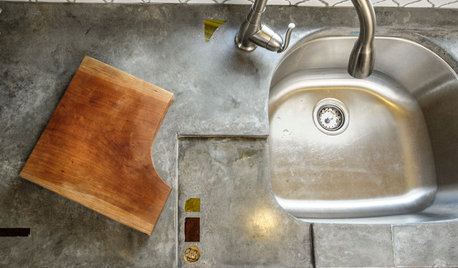

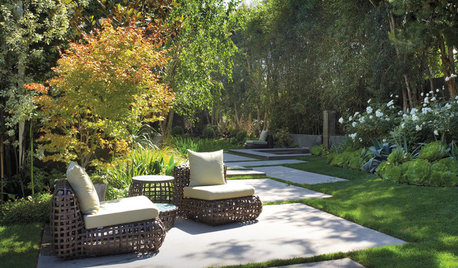
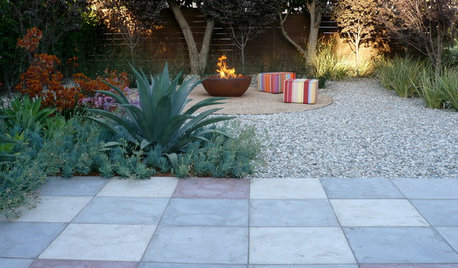
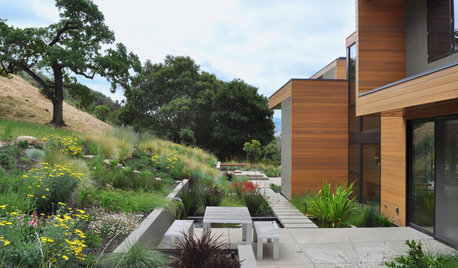


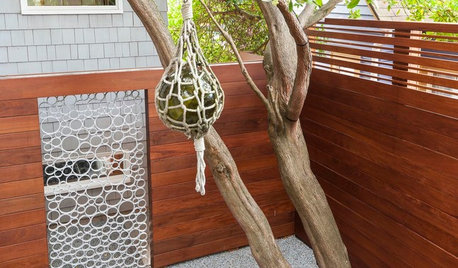
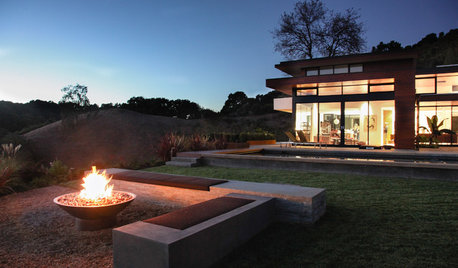




Related Discussions
How to grow rhubarb for leaf cast
Q
how to get rubarb leaves off cast leaf?
Q
information on making leaves needed!
Q
Need ideas about leaf casting of split leaf philodendron
Q